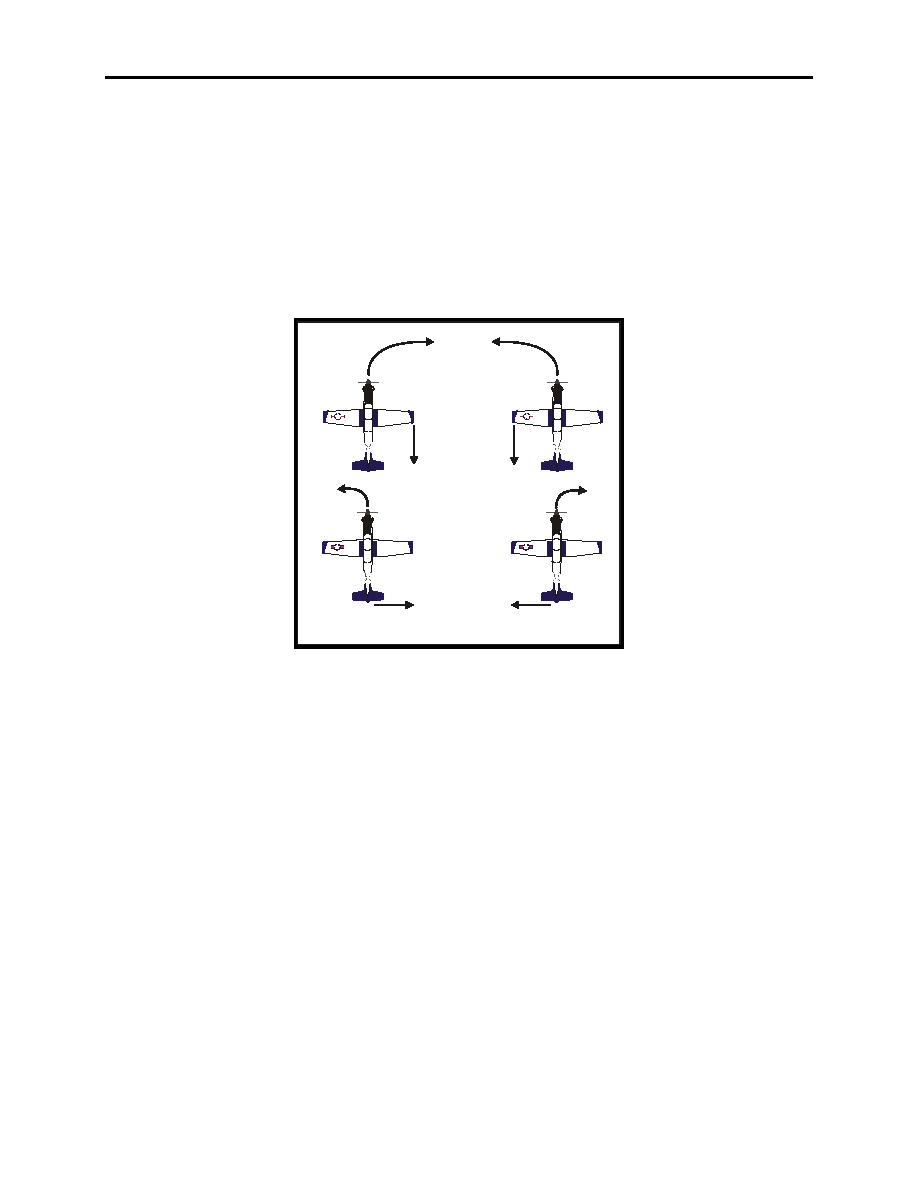 |
|||
|
|
|||
|
|
|||
| ||||||||||
|
|  T-6A CONTACT
CHAPTER TWO
Adverse Yaw (Figure 2-3): Coordinated use of the rudder with the ailerons in a turn will
counteract the effects of adverse yaw. Adverse yaw occurs when the upper wing in a turn is
producing more lift, and therefore, more drag (induced drag due to lift) than the lower wing.
This will cause the nose of the aircraft to initially pull in the opposite direction of the desired
turn. An undesirable effect, adverse yaw is most apparent at low speeds and extreme control-
surface deflections. At faster airspeeds, adverse yaw becomes less apparent and may be
unnoticeable. When accomplishing slow flight, watch closely for the effects of adverse yaw in
the turn. Your instructor can share techniques on how to appropriately use the rudder while
initiating a turn to counter adverse yaw effects.
Yaw
Drag
Anti
Anti
Yaw
Adverse Yaw
Yaw
Rudder Correction
Figure 2-3 Adverse Yaw
Rudder
The rudder controls the aircraft's movement about its vertical axis. This motion is called yaw.
Like the other primary control surfaces, the rudder is a movable surface hinged to a fixed surface
in this case to the vertical stabilizer. Left and right rudder pedals control rudder movement. Its
action is much like that of the elevators, except the motion is side to side instead of up and down.
When the rudder is deflected to one side, it protrudes into the airflow, causing a horizontal force
to be exerted in the opposite direction (Figure 2-3). This pushes the tail of the aircraft in that
direction and yaws the nose in the desired direction. For example: when the rudder is deflected
to the left, it protrudes into the airflow on the left side of the tail, causing a horizontal force to be
exerted on the tail to the right. This pushes the tail of the aircraft to the right and yaws the nose
to the left.
On the ground, the T-6A rudder pedals manipulate the nose wheel steering (if engaged), which is
used to directionally control the aircraft while taxiing. Taxiing will be discussed in greater detail
in Chapter Four, Ground Operations.
THE FLIGHT CONTROLS
2-3
|
|
Privacy Statement - Press Release - Copyright Information. - Contact Us |